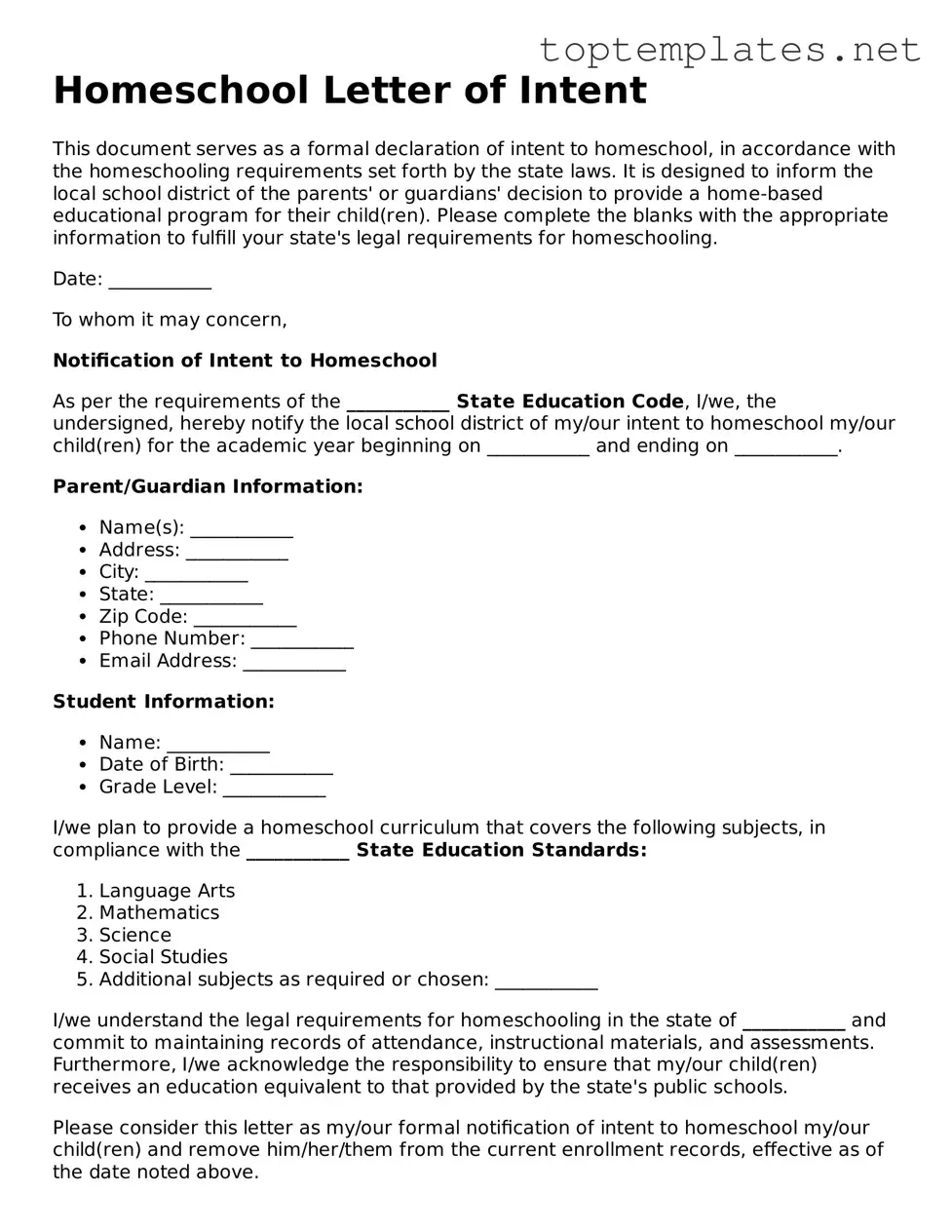Homeschool Letter of Intent
This document serves as a formal declaration of intent to homeschool, in accordance with the homeschooling requirements set forth by the state laws. It is designed to inform the local school district of the parents' or guardians' decision to provide a home-based educational program for their child(ren). Please complete the blanks with the appropriate information to fulfill your state's legal requirements for homeschooling.
Date: ___________
To whom it may concern,
Notification of Intent to Homeschool
As per the requirements of the ___________ State Education Code, I/we, the undersigned, hereby notify the local school district of my/our intent to homeschool my/our child(ren) for the academic year beginning on ___________ and ending on ___________.
Parent/Guardian Information:
- Name(s): ___________
- Address: ___________
- City: ___________
- State: ___________
- Zip Code: ___________
- Phone Number: ___________
- Email Address: ___________
Student Information:
- Name: ___________
- Date of Birth: ___________
- Grade Level: ___________
I/we plan to provide a homeschool curriculum that covers the following subjects, in compliance with the ___________ State Education Standards:
- Language Arts
- Mathematics
- Science
- Social Studies
- Additional subjects as required or chosen: ___________
I/we understand the legal requirements for homeschooling in the state of ___________ and commit to maintaining records of attendance, instructional materials, and assessments. Furthermore, I/we acknowledge the responsibility to ensure that my/our child(ren) receives an education equivalent to that provided by the state's public schools.
Please consider this letter as my/our formal notification of intent to homeschool my/our child(ren) and remove him/her/them from the current enrollment records, effective as of the date noted above.
Sincerely,
_______________________
Parent/Guardian Signature
_______________________
Date
